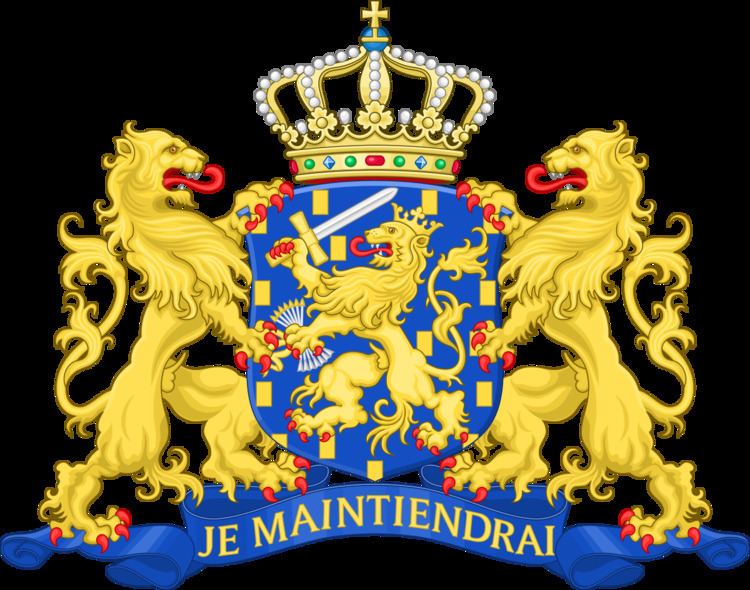Ministers removed(Death/resignation/dismissal) 1 | ||
 | ||
Date formed 14 October 2010 (2010-10-14) Date dissolved 5 November 2012 (2012-11-05) Head of state Beatrix of the Netherlands | ||
The First Rutte cabinet, also called the Rutte-Verhagen cabinet was the executive branch of the Dutch government from 14 October 2010 until 5 November 2012. The cabinet was formed by the political parties People's Party for Freedom and Democracy (VVD) and Christian Democratic Appeal (CDA) after the Dutch general election of 2010. The cabinet was a minority cabinet but it was supported by the Party for Freedom (PVV) in the House of Representatives for a majority.
Contents
Formation
Following the collapse of the fourth Balkenende cabinet on 20 February 2010, elections for the House of Representatives were held on 9 June 2010. As usual in Dutch politics, none of the parties had a majority and several Informateurs were appointed to investigate the formation of a coalition cabinet. A broad coalition consisting of the People's Party for Freedom and Democracy, Christian Democratic Appeal and the Labour Party was briefly looked at, but dismissed. Then negotiations for a "purple plus" coalition consisting of the People's Party for Freedom and Democracy, Labour Party, Democrats 66 and GreenLeft lasted for about three weeks, but the parties could not reach agreement on the amount of budget cuts. Finally, a construction which is rare for the Netherlands was investigated: a minority coalition consisting of the People's Party for Freedom and Democracy and Christian Democratic Appeal (together 52 out of 150 seats in the House of Representatives), supported in parliament by the Party for Freedom (24 seats), to make the smallest possible majority of 76 seats. The reason for this construction was that parties agreed that the largest party the People's Party for Freedom and Democracy and the largest winner in the elections needed to be in power; only the Christian Democratic Appeal could or wanted to help make a majority, but they were against forming a proper coalition with Party for Freedom because of their different views on Islam and immigration. Therefore, negotiations were held to form a coalition agreement between the People's Party for Freedom and Democracy and Christian Democratic Appeal, and to form a "parliamentary support agreement" between all three parties, which were successfully finished on 30 September 2010.
The opposition parties expected that the coalition would prove to be unstable because at a special Christian Democratic Appeal conference, about a third of the Christian Democratic Appeal members voted against the formation of this cabinet. Also, in the Christian Democratic Appeal parliamentary fraction at least two people indicated they have difficulties with the cabinet, but say they will support it because the majority of the party approves of the cabinet.
When the cabinet took office, the three parties had a minority in the Senate of 35 out of 75 seats. The parties hoped this would change following the Dutch Senate election of 2011, but they obtained 37 seats, one short of a majority. However, it is expected that the small Christian party Reformed Political Party, which obtained one seat, will support the cabinet in the Senate.
Withdrawal of support of the Party for Freedom
Because of the financial crisis in the Netherlands and because of the rules of the European Union that the deficit should be maximum 3%, the Christian Democratic Appeal (Maxime Verhagen), the People's Party for Freedom and Democracy (Mark Rutte), and the Party for Freedom (Geert Wilders) decided to talk with each other about new, severe austerity measures, worth about 14 billion Euro. The negotiations about the measures lasted 7 weeks and ended on 21 April when Geert Wilders walked out of the negotiations. The reason he gave was that the measure would negatively impact people who receive benefits from the Dutch pension act. Both Rutte and Verhagen blamed Wilders for the failure of the negotiations. As a result, the government resigned and a new election was called.
Composition
The cabinet consisted of 12 Ministers and 8 Undersecretaries. The positions where divided equally among the coalition members, regardless of their respective size: People's Party for Freedom and Democracy (31 seats in parliament) supplied 6 Ministers and 4 Undersecretaries, and Christian Democratic Appeal (21 seats) also supplied 6 Ministers and 4 Undersecretaries.
The number of Ministers and Undersecretaries was reduced from the previous cabinet by merging several ministries: the Ministry of Agriculture, Nature and Food Quality was merged with the Ministry of Economic Affairs; the Ministry of Housing, Spatial Planning and the Environment was merged with the Ministry of Transport, Public Works and Water Management to form the new Ministry of Infrastructure and the Environment; some tasks of the Ministry of the Interior and Kingdom Relations went to the Ministry of Justice, which was renamed the Ministry of Security and Justice. Also the Minister for Development Cooperation was scrapped and replaced by a Minister without portfolio for Immigration, Integration and Asylum Affairs.
On 16 December 2011 the Minister of the Interior and Kingdom Relations Piet Hein Donner resigned after he was selected as the new Vice President of the Council of State succeeding Herman Tjeenk Willink, he was replaced as Minister of the Interior and Kingdom Relations by fellow Christian Democratic Appeal party member Liesbeth Spies.
Title Allowed to use a ministers title while on foreign business.Appt Appointment: Piet Hein Donner appointed Vice President of the Council of State.